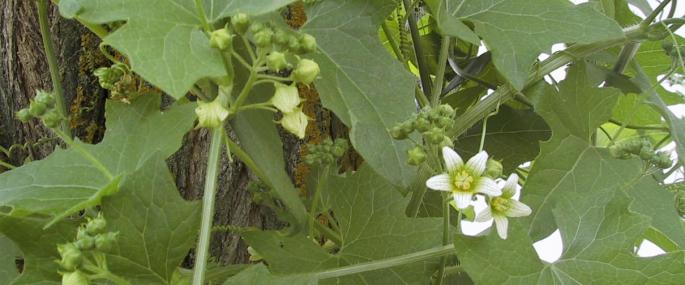White Bryony is a climbing hedgerow and woodland edge plant that flowers between May and August and produces red and shiny berries that can be seen, covered in frost, in winter. Our only native member of the cucumber family, White Bryony is actually highly poisonous. The roots are particularly toxic and, despite their bitter taste, sometimes get eaten by cattle with fatal consequences.
Our hedgerows support all kinds of wildlife, providing vital food and shelter. But these habitats are disappearing with the intensification of agriculture. The Wildlife Trusts are working closely with farmers, landowners and developers to promote wildlife-friendly practices, such as planting hedges and leaving field margins. We have a vision of a 'Living Landscape': a network of habitats and wildlife corridors across town and country, which are good for both wildlife and people. You can support this greener vision for the future by joining your local Wildlife Trust.
